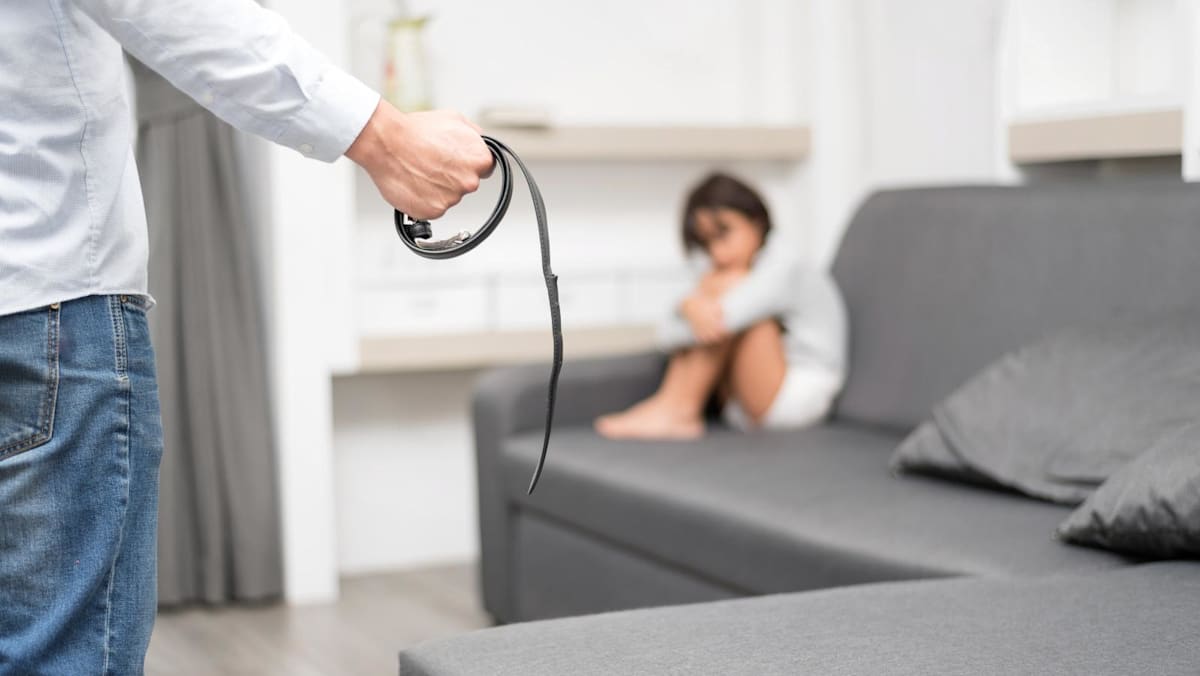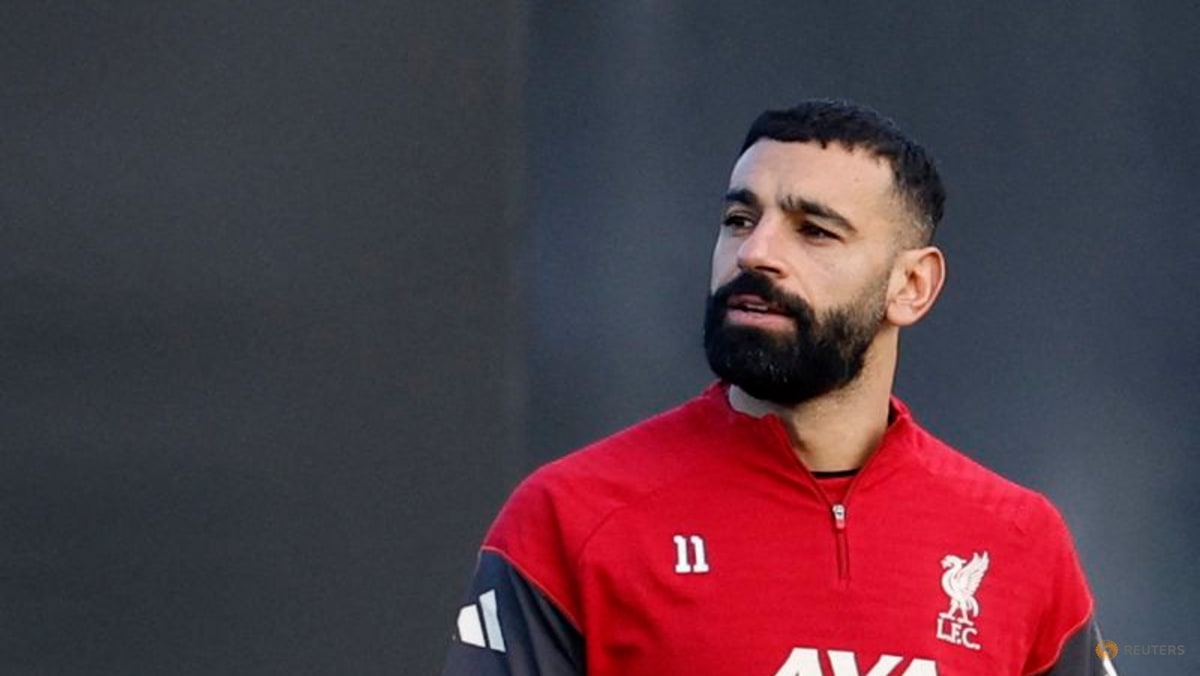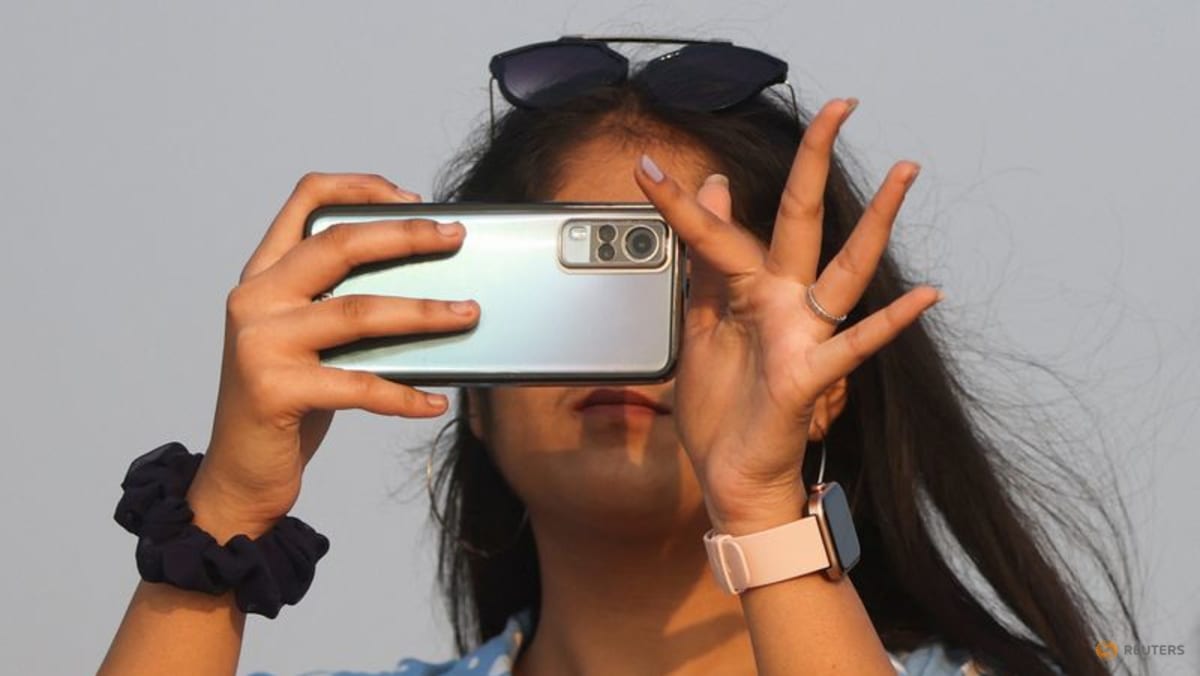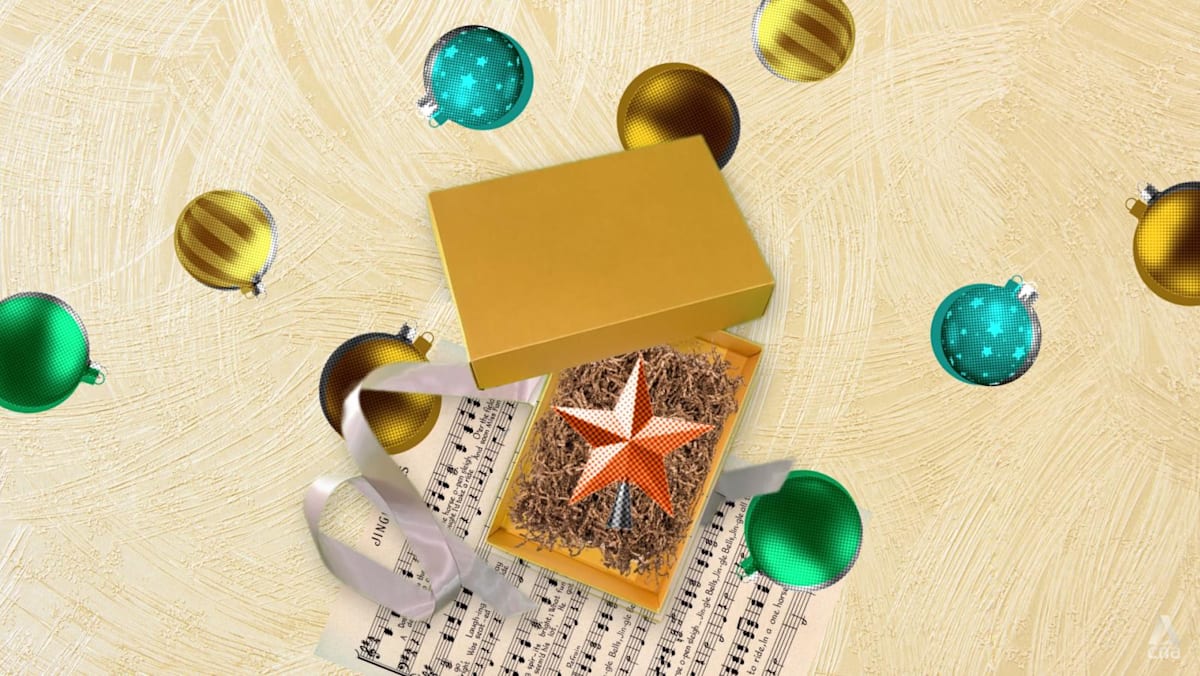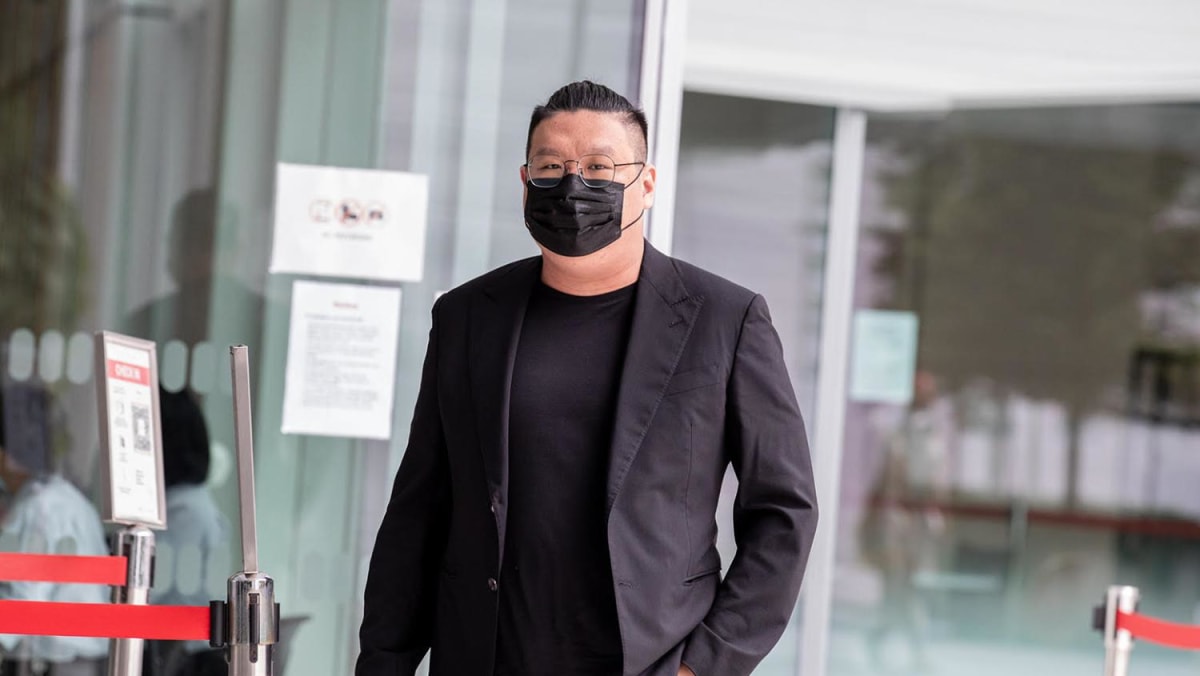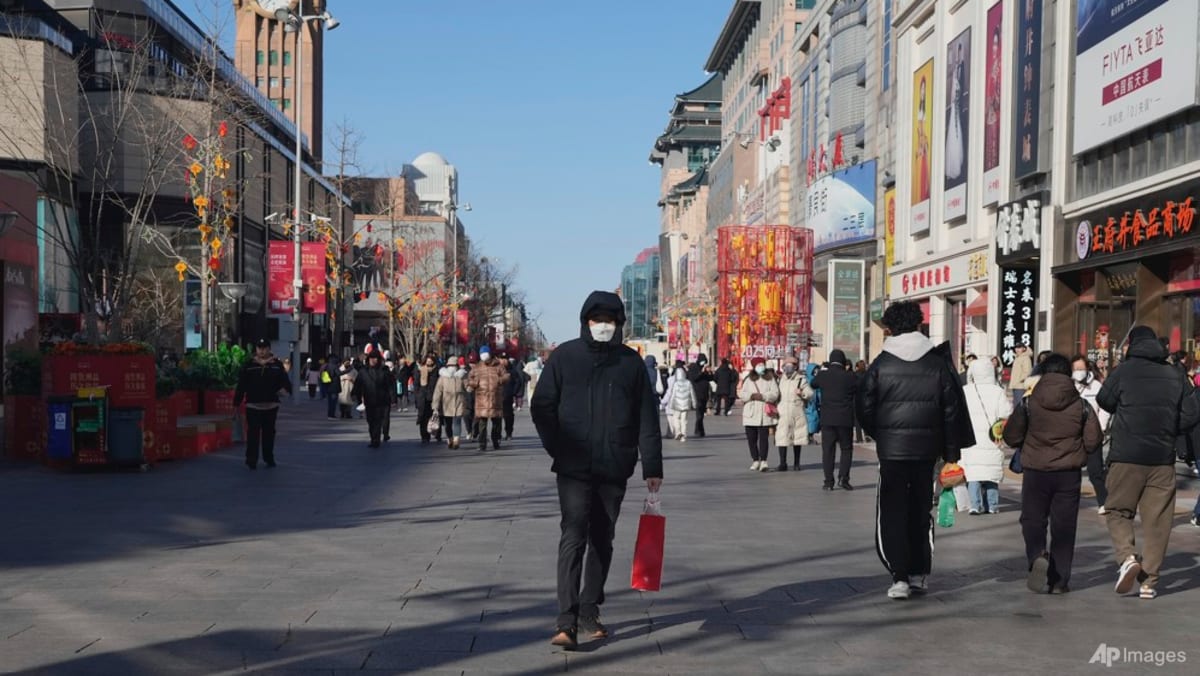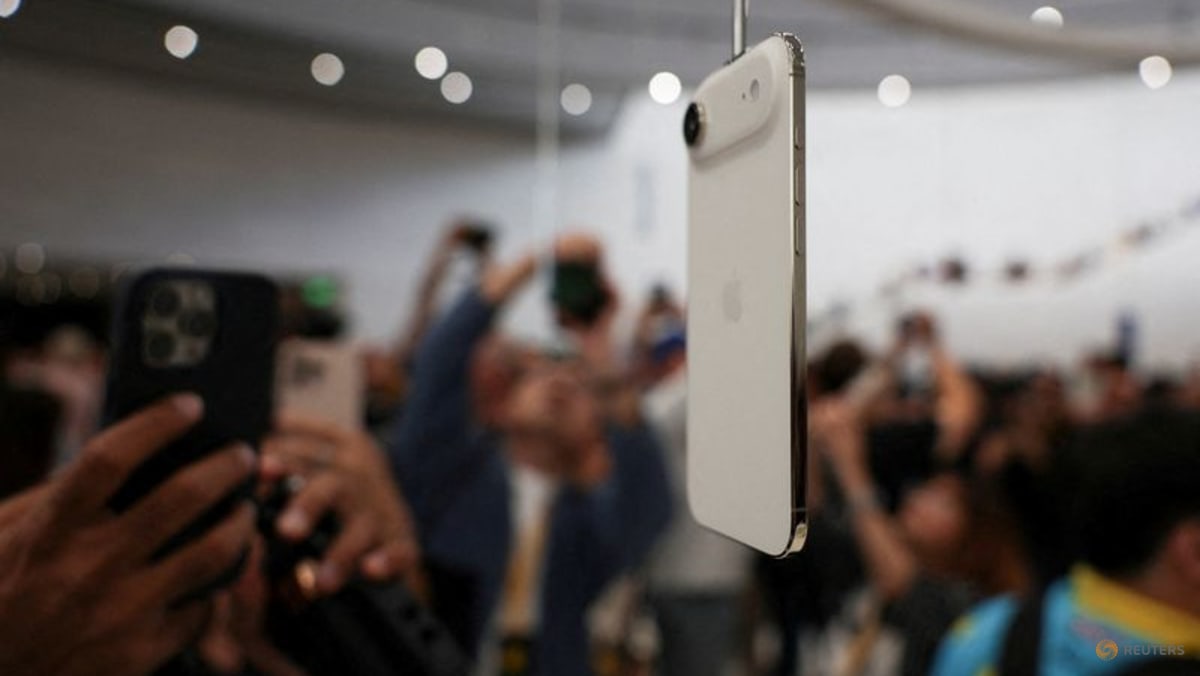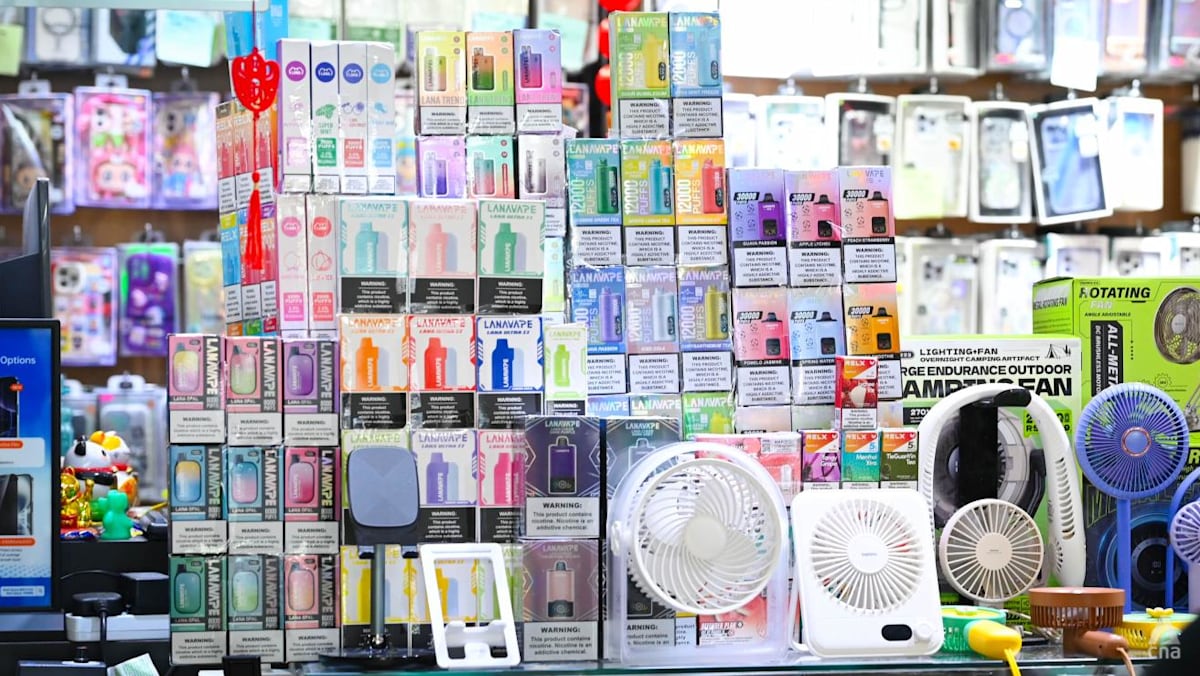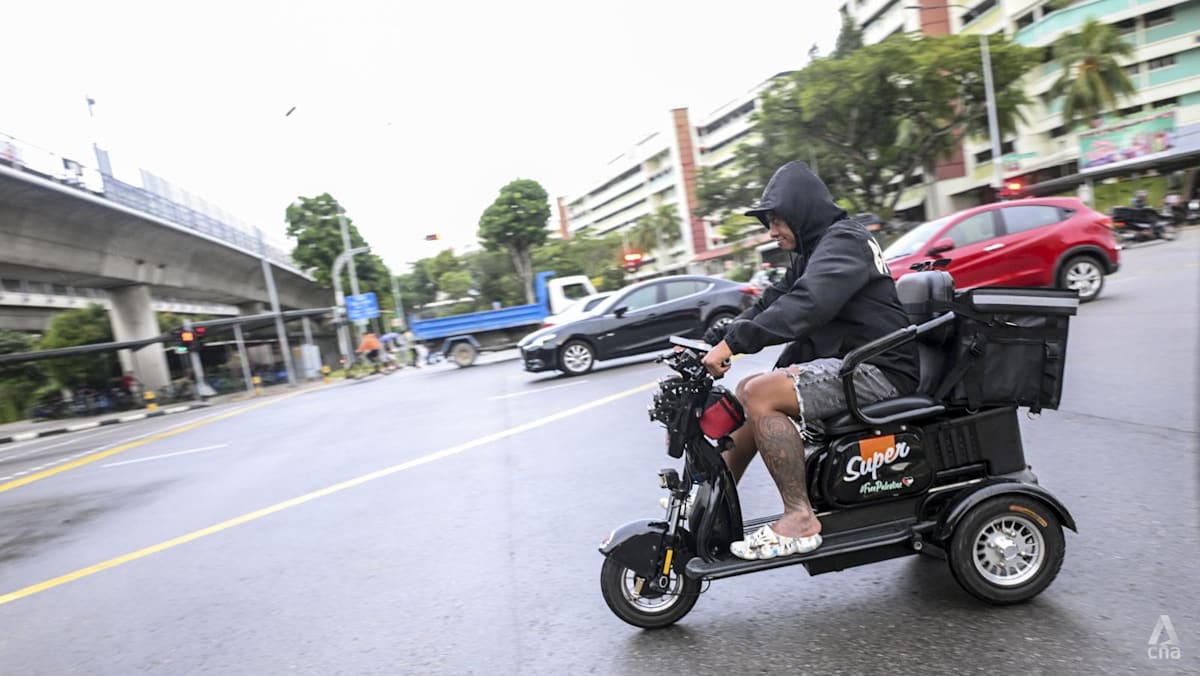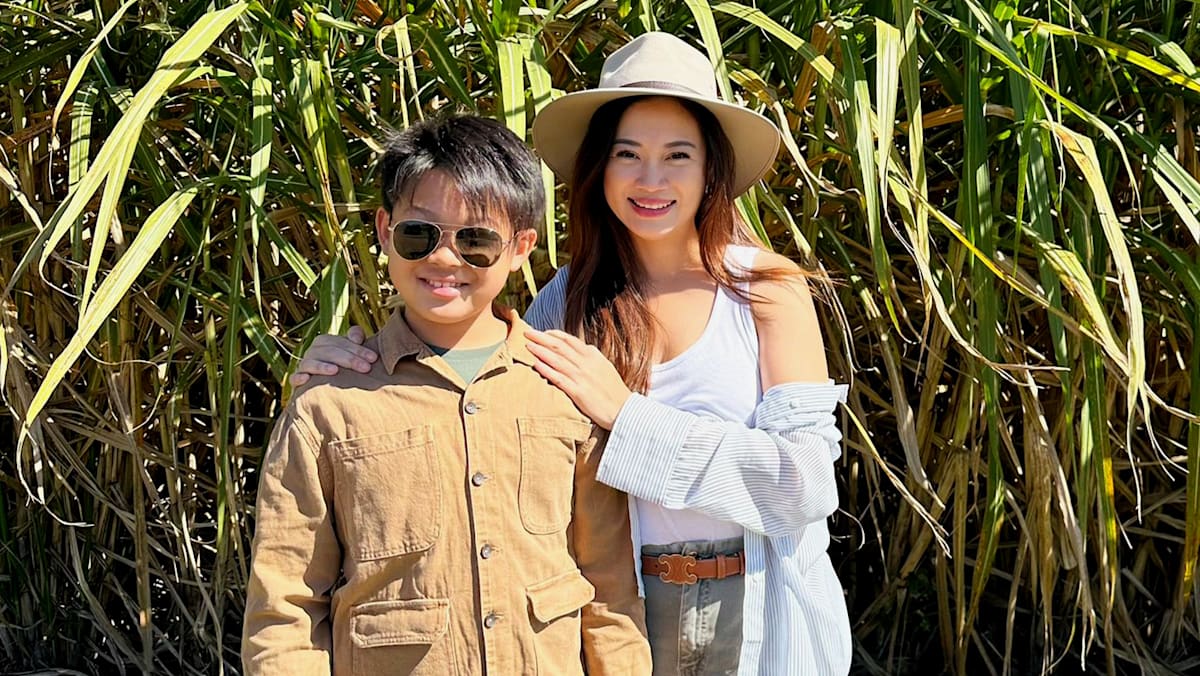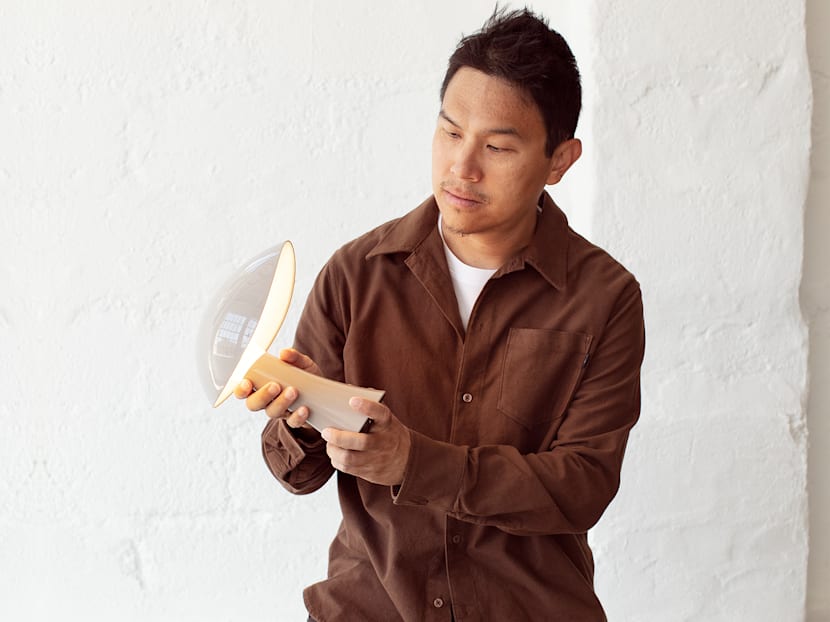
Gabriel Tan and the Rumee lamp he designed for Louis Poulsen. The lamp comes with a diffuser for glare-free lighting, and can be used indoors and outdoors. (Photo: Louis Poulsen)
New: You can now listen to articles.

This audio is generated by an AI tool.
Copenhagen-based lighting brand Louis Poulsen’s lamps are found all over the world – in homes, offices, restaurants and hotels. Its PH series, designed by Danish architect Poul Henningsen in 1958, is recognised by its three-shade profile like layered petals that provide glare-free illumination while dispersing a warm glow that does not shine directly into the eyes of people around it.
Another icon is the AJ lamp, designed by Arne Jacobsen initially for the famous SAS Royal Hotel in Copenhagen in 1957. And then, there is the Panthella floor and table lamp, designed in 1971 by Verner Panton to be both a monolithic sculpture and functional light.
In 1847, founder Ludvig R Poulsen opened a lighting and electrical supplies shop in Copenhagen. His nephew, Louis, joined four years later and went on to work with talented designers to create classic lamps.
One hundred and fifty one years later, Singaporean designer Gabriel Tan has been added to the fold of the brand’s esteemed collaborators. Tan, who has offices in Porto and Singapore, is the founder of Gabriel Tan Studio and co-founder of craft brand Origin Made together with his wife Cherie Er; he is also the creative director of Japanese furniture brand Ariake and has designed for reputed brands such as Herman Miller and B&B Italia (Louis Poulsen has been part of the Flos B&B Italia Group since 2018).
In July 2025, Tan was one of two awardees of the President’s Design Awards’ Designer of the Year prize. He is now also the inaugural Louis Poulsen Designer of the Year 2025, chosen from top designers around the world for his Rumee portable lamp. The award was established by the brand to honour today’s most distinguished modern designers.
A LIGHTING ROOMMATE
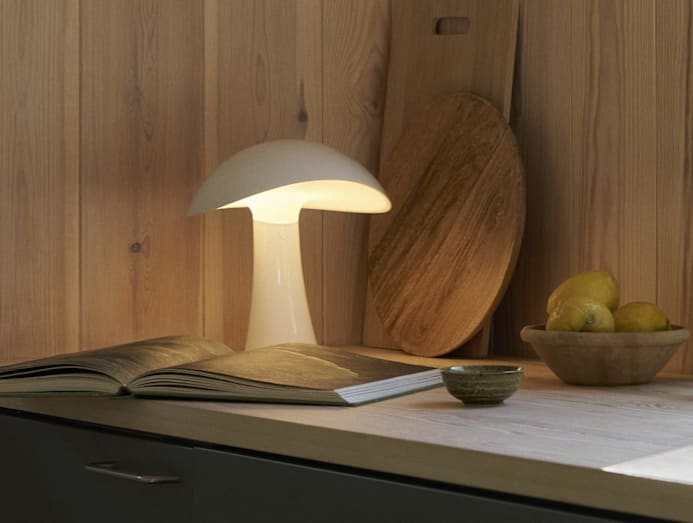 A lot of work went into refining the Rumee lamp's design, including adjusting the stem thickness, button position, and the placement of the charging port. (Photo: Louis Poulsen)
A lot of work went into refining the Rumee lamp's design, including adjusting the stem thickness, button position, and the placement of the charging port. (Photo: Louis Poulsen)
“Gabriel Tan has successfully embraced Louis Poulsen’s lighting philosophy, Design to Shape Light, through an emotionally appealing design. With Rumee, he upholds the proud tradition of maintaining high lighting standards while incorporating a distinctive Gabriel Tan design style,” mentioned Monique Faber, chief design officer at Louis Poulsen in a press statement.
The lamp features a broad hat with a wavy shape. Its name comes from the Danish word ‘rum’ (it means 'room' in English). Tan, who shared that he now uses the lamp as his bedside reading light, had intended for the lamp to be like a “roommate” to its user. It has a tilted head that provides a diagonal, downward facing, 360-degree light; the shade that spreads outward toward the edge helps expand the beam angle for better illumination. In Singapore, Louis Poulsen is retailed at Grafunkt and Xtra, and the lamp is available from November 2025.
“I am very sensitive when it comes to the quality of light, and always go for indirect, soft lighting in the spaces I design. I really appreciate Louis Poulsen’s philosophy of soft, emotional lighting that is not only beautiful but also comfortable for the eyes,” said Tan through email.
The founding member of the now-defunct OutofStock design collective who studied industrial design at the National University of Singapore, had read about Henningsen’s work as a student and admired his designs. “His scientific approach to eliminating glare while maximising light showed that lighting design could be both rigorously technical and emotionally resonant,” Tan remarked.
DREAM TO REALITY
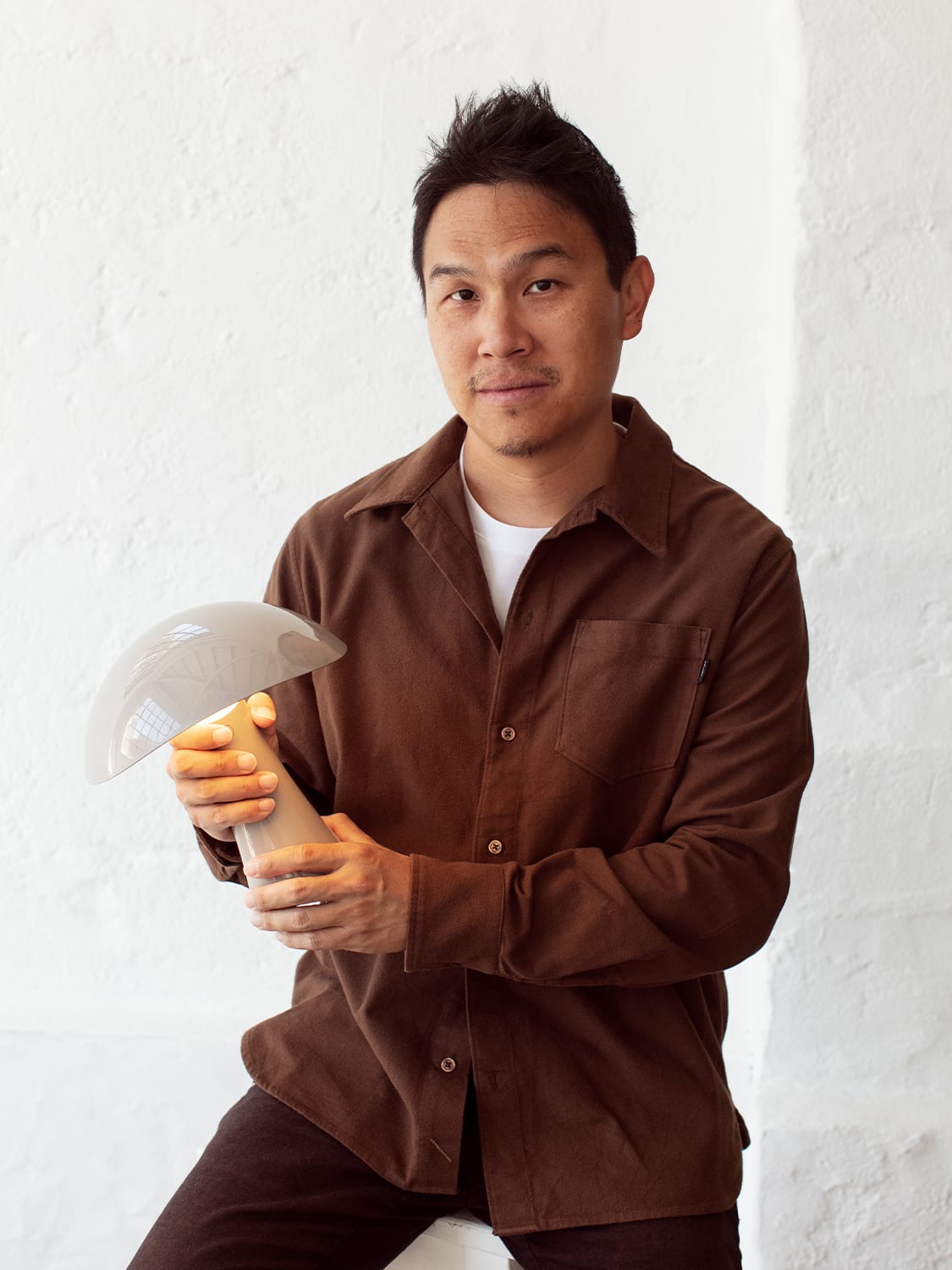 Gabriel Tan’s designs have received many awards, including the Industrial Designers Society of America’s IDSA Award, the Good Design Award (Japan) and the President’s Design Award. (Photo: Louis Poulsen)
Gabriel Tan’s designs have received many awards, including the Industrial Designers Society of America’s IDSA Award, the Good Design Award (Japan) and the President’s Design Award. (Photo: Louis Poulsen)
Tan first visited Louis Poulsen’s headquarters in Denmark about 15 years ago during a study trip organised by Spring Singapore and Singapore Furniture Industries Council. “It left a deep impression, and I remember thinking then that it would be fantastic to work with this company one day,” he said.
That distant dream came closer to reality when Tan met the Louis Poulsen management team at Milan Design Week 2023 while launching his Quiet Lines collection for B&B Italia – he received an invitation to visit the headquarters again. “I went that summer when I was on vacation in Denmark with my family – we were taking the kids to Lego Land,” he said.
In Tan’s suitcase then was a 3D-printed, full-scale prototype of a pendant lamp. He showed it to Louis Poulsen’s creative director who declined that design but said she would keep him in mind for future design projects. “I thought she was just being polite, so I was positively surprised when I received a brief from her for a portable design lamp a few months later. I worked over Christmas to deliver the design proposals, and Louis Poulsen selected one of the concepts that ended up being the Rumee portable lamp,” shared Tan.
A lot of work went into refining its design, including adjusting the stem thickness, button position, as well as deciding the placement of the charging port “to the precision of 0.1 millimetres – all in service of the users’ hands-on experience,” said Tan.
He added, “There was never pressure to compromise on quality or rush to market. That patience and precision are what makes Louis Poulsen a leader in their field, especially in an industry that often priorities speed and cost reduction in catching the purchasing waves of the retail market.”
CHALLENGES OF DESIGNING RUMEE
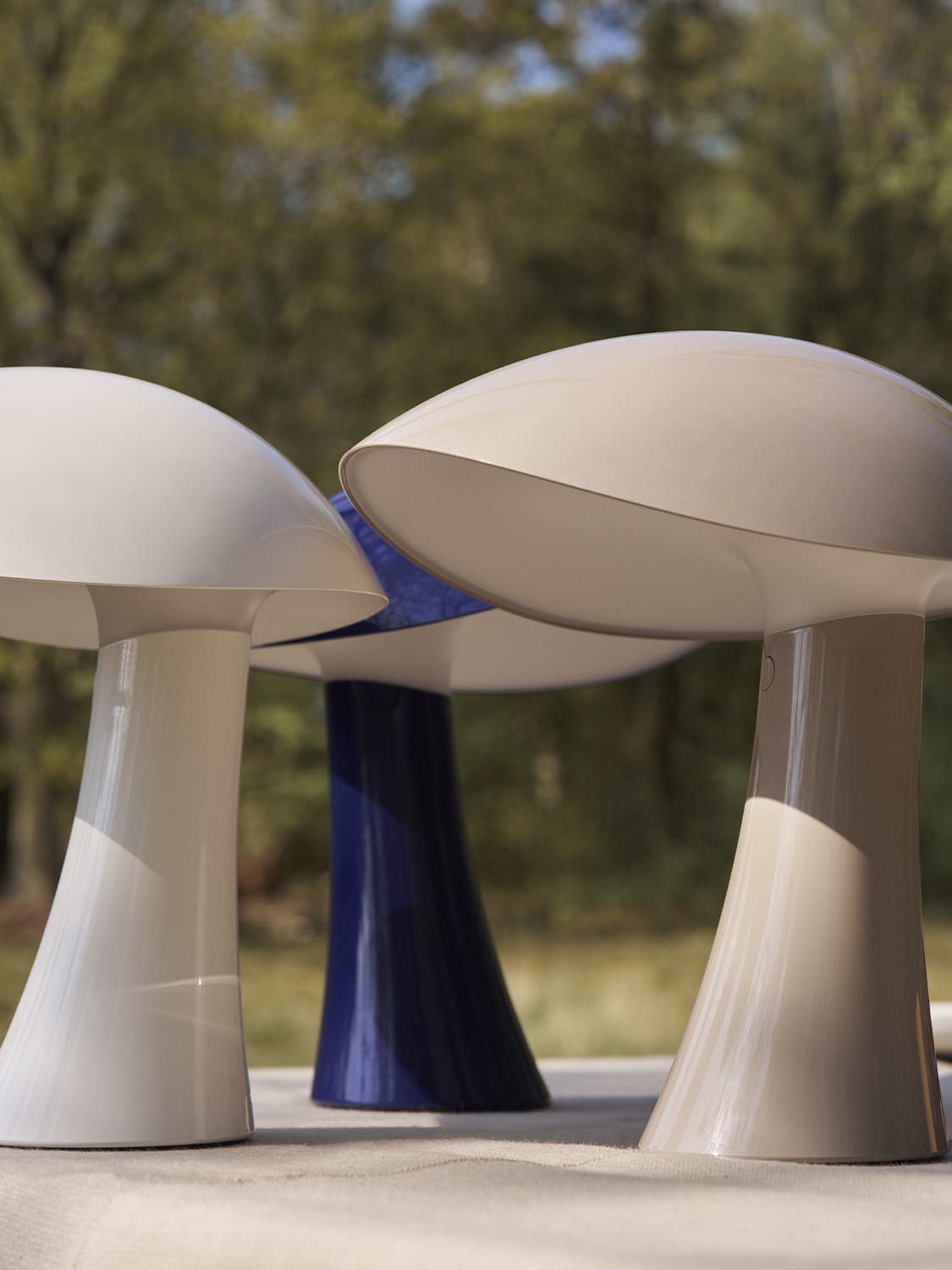 The Rumee lamp comes in three colours – glossy white, warm grey and blue. (Photo: Louis Poulsen)
The Rumee lamp comes in three colours – glossy white, warm grey and blue. (Photo: Louis Poulsen)
Portable lamps are a dime a dozen in the market so Tan found that he had to create something that has “the right to exist” while not mimicking Louis Poulsen’s past designs. “I wanted this new lamp to have warmth and personality, to look almost as if it had been shaped by hand,” he said. At the same time, the lamp had to be simple enough to be manufactured at scale at a consistent quality.
One particular technical challenge was attaining the fluid line between the shade and stem while maintaining structural integrity and optimal light distribution. “That uninterrupted organic form, where the frosted diffuser continues from the shade down into the handle, was essential to our design vision, and gave Rumme its defining detail,” said Tan.
Many prototypes were made to get the final design. “What looks right visually doesn't always feel right in the hand, so we had to test physical prototypes extensively, holding them in different positions, carrying them around, and using them in real scenarios. This kind of ergonomic refinement cannot be done purely through digital modelling,” said Tan regarding the handle design.
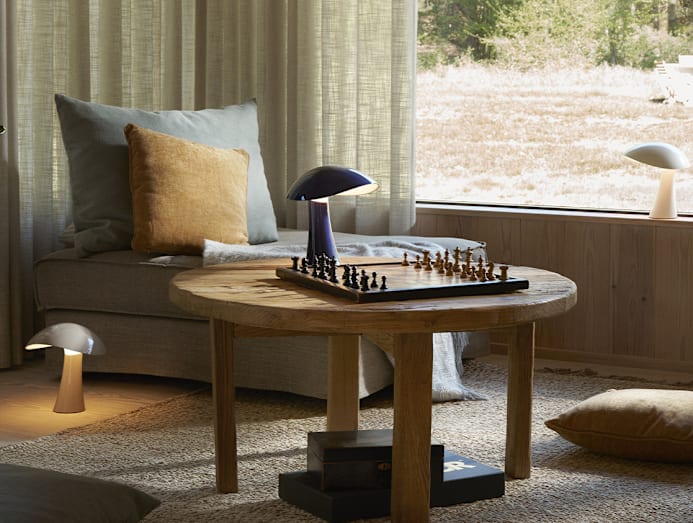 (Photo: Louis Poulsen)
(Photo: Louis Poulsen)
The challenges were not just technical. “Personally, there was also the psychological responsibility of designing for such a storied brand. Louis Poulsen’s archive contains some of the most important lighting designs of the 20th century. That pressure to create something worthy of that legacy, something that could potentially stand alongside Henningsen’s, Jacobesen’s, and Panton’s work decades from now, was significant,” said Tan. “I had to push past that intimidation and trust my own design instincts.”
For him, being the inaugural Louis Poulsen Designer of the Year is humbling and validating: “My design has become part of a lineage of a lighting brand that spans 150 years and includes some of the most iconic lamps and designers. It is evidence that hard work and perseverance can be rewarded, regardless of where you are from or which school you attended.”



